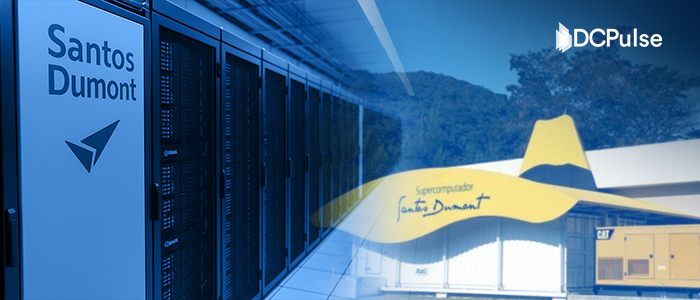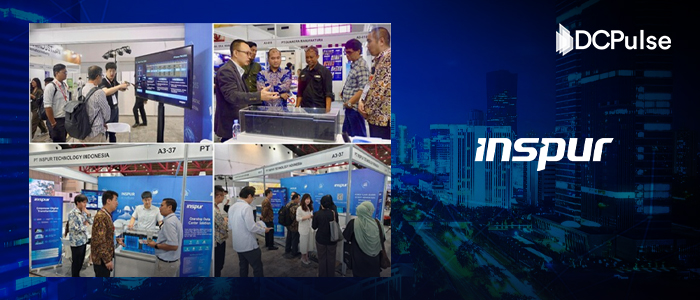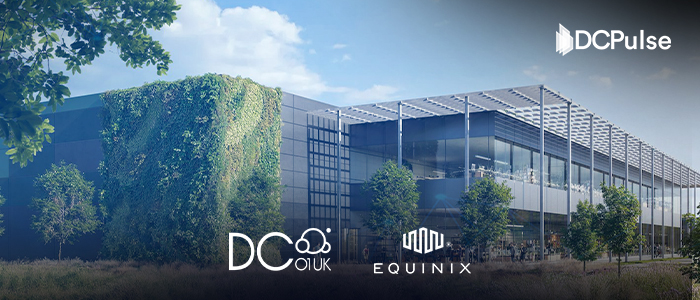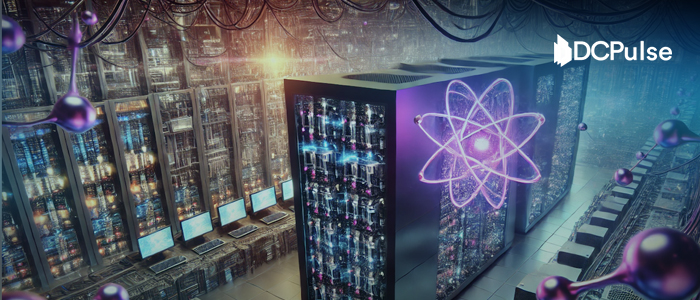Petrópolis, Brazil, July 13, 2025- Brazil’s National Laboratory for Scientific Computing (LNCC) has completed a major upgrade to its flagship high-performance computing platform, the Santos Dumont supercomputer.
The overhaul transforms it into one of Latin America’s most powerful AI-ready systems, delivering 18.85 petaflops of performance, a nearly 575% increase over its original 2015 configuration.
The upgrade, led by Eviden, the Atos Group’s HPC division, was executed under a contract awarded in April 2024 as part of Brazil’s broader R&D acceleration strategy.
The new architecture integrates five compute partitions built on a hybrid base of Intel Xeon CPUs, AMD EPYC processors, and multiple tiers of GPU acceleration, including NVIDIA H100s, Grace Hopper Superchips, and AMD MI300A APUs, connected via 400 Gbps Nvidia InfiniBand. This configuration supports a diverse mix of workloads such as AI training, genomics, fluid dynamics, and climate modelling.
LNCC President Fábio Borges stated that the new system “allows greater robustness in calculations intended for research, especially using artificial intelligence,” aligning with the goals of the federal government’s Brazilian Artificial Intelligence Plan (PBIA), a multi-year USD 23 billion initiative aimed at modernizing national research infrastructure and building AI capacity.
The revamped Santos Dumont system also introduces Direct Liquid Cooling (DLC), a major improvement for thermal efficiency in Brazil’s tropical climate. The cooling system draws water at 26–30°C and achieves over 98.5% thermal capture efficiency, up from approximately 80% before the upgrade.
The infrastructure overhaul includes redesigned liquid distribution and optimized data hall architecture to lower energy consumption and enhance reliability.
Luis Casuscelli, South America HPC lead at Eviden, emphasized that the project was designed to balance power with sustainability. “It gives LNCC’s researchers enhanced computing power and dedicated AI capabilities while continuously improving energy efficiency,” he said.
Santos Dumont has played a central role in Brazilian science for over a decade. Located on LNCC’s campus in Petrópolis, the supercomputer has supported more than 430 federally funded projects and over 2,000 researchers, contributing to advances in fields such as astrophysics, advanced materials, meteorology, and public health. During the COVID-19 pandemic, it enabled genomic modeling, virus propagation simulations, and drug interaction analyses that informed national policy.
The modular architecture of the new system allows its five partitions to be independently allocated across various workloads, bridging traditional simulation-based research and AI-intensive processes such as large language model (LLM) training and AI-augmented climate modeling.
LNCC engineers expect this flexibility to extend the system’s useful lifespan and make it adaptable to future demands.
With this performance, Santos Dumont is expected to reenter the TOP500 list of global supercomputers, potentially ranking within the top 200, a significant rebound after falling behind systems in Chile and Mexico in recent years.
Globally, Santos Dumont’s performance would place it near systems like Spain’s MareNostrum 5 and Korea’s Nurion-2, both of which sit in the mid-tier of the TOP500.
While Brazil still trails global HPC giants like the U.S. Frontier or Japan’s Fugaku, this upgrade closes the gap between emerging economies and the world’s top AI infrastructure leaders.
The system’s enhanced GPU fabric is particularly suited for training multilingual AI models in underrepresented languages, including Brazilian Portuguese and Indigenous dialects.
This capability supports national goals related to digital inclusion, AI fairness, and locally relevant language technology.
LNCC has also indicated that Santos Dumont will support AI-enhanced models for Amazon basin hydrology, reforestation planning, and carbon credit validation, tools essential to Brazil’s environmental strategy and its commitments under the Amazon Cooperation Treaty Organization.
Looking ahead, LNCC is positioned to serve as a keystone in Brazil’s plan to establish a federated national computing grid by 2028. Under PBIA, the initiative aims to integrate university and lab-based infrastructure through open APIs, sovereign cloud layers, and shared data standards.
The federal government expects this grid to enhance data sovereignty and research equity nationwide.
In parallel, industry and public-sector partners such as Petrobras and FINEP are reportedly aligning future investments with the upgraded system’s capabilities.
Potential research tracks include AI-driven subsurface modeling for energy exploration and large-scale biodiversity genomics, two areas of strategic importance to Brazil’s economic and ecological agenda.
With the upgrade now live, Santos Dumont enters a new phase of service, equipped not just for speed but for long-term adaptability, energy efficiency, and regional impact.





.jpg)